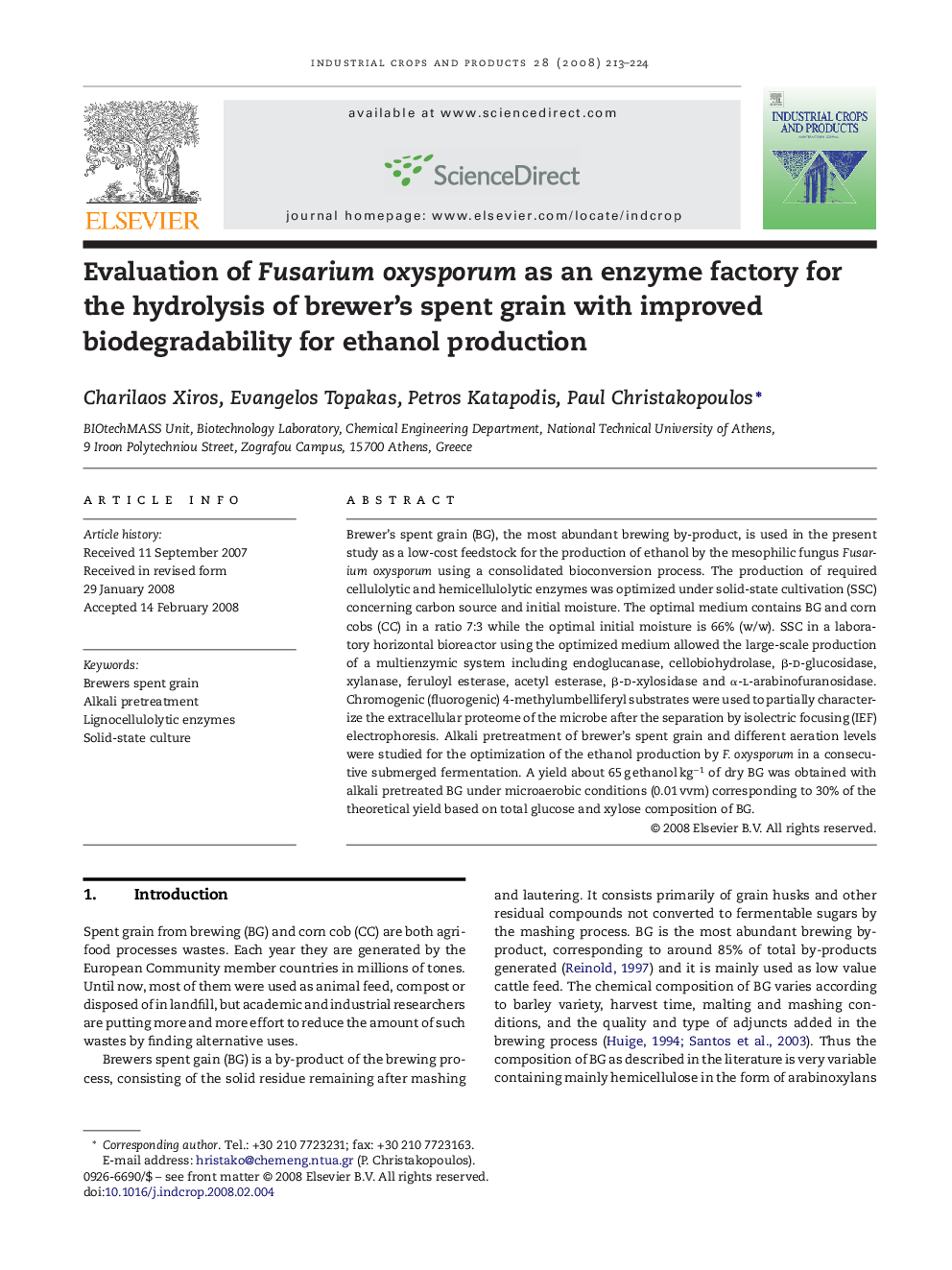| Article ID | Journal | Published Year | Pages | File Type |
|---|---|---|---|---|
| 4515056 | Industrial Crops and Products | 2008 | 12 Pages |
Brewer's spent grain (BG), the most abundant brewing by-product, is used in the present study as a low-cost feedstock for the production of ethanol by the mesophilic fungus Fusarium oxysporum using a consolidated bioconversion process. The production of required cellulolytic and hemicellulolytic enzymes was optimized under solid-state cultivation (SSC) concerning carbon source and initial moisture. The optimal medium contains BG and corn cobs (CC) in a ratio 7:3 while the optimal initial moisture is 66% (w/w). SSC in a laboratory horizontal bioreactor using the optimized medium allowed the large-scale production of a multienzymic system including endoglucanase, cellobiohydrolase, β-d-glucosidase, xylanase, feruloyl esterase, acetyl esterase, β-d-xylosidase and α-l-arabinofuranosidase. Chromogenic (fluorogenic) 4-methylumbelliferyl substrates were used to partially characterize the extracellular proteome of the microbe after the separation by isolectric focusing (IEF) electrophoresis. Alkali pretreatment of brewer's spent grain and different aeration levels were studied for the optimization of the ethanol production by F. oxysporum in a consecutive submerged fermentation. A yield about 65 g ethanol kg−1 of dry BG was obtained with alkali pretreated BG under microaerobic conditions (0.01 vvm) corresponding to 30% of the theoretical yield based on total glucose and xylose composition of BG.
